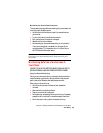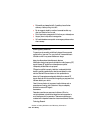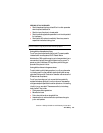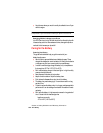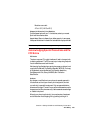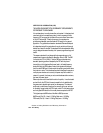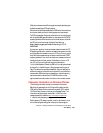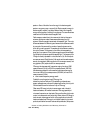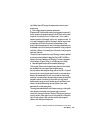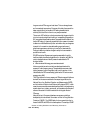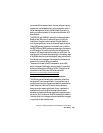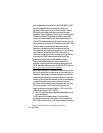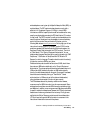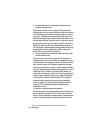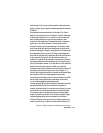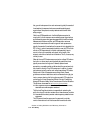Section 4: Safety Guidelines and Warranty Information
4A: Safety 107
food. Medical uses of RF energy include pacemaker monitoring and
programming.
3. How is radio frequency radiation measured?
RF waves and RF fields have both electrical and magnetic components. It
is often convenient to express the strength of the RF field in terms of each
component. For example, the unit "volts per meter" (V/m) is used to
measure the electric field strength, and the unit "amperes per meter" (A/
m) is used to express the magnetic field strength. Another common way
to characterize an RF field is by means of the power density. Power
density is defined as power per unit area. For example, power density can
be expressed in terms of milliwatts (one thousandth of a watt) per square
centimeter (mW/cm2 or microwatts (one millionth of a watt) per square
centimeter (µW/cm2).
The quantity used to measure how much RF energy is actually absorbed
by the body is called the Specific Absorption Rate or SAR. The SAR is a
measure of the rate of absorption of RF energy. It is usually expressed in
units of watts per kilogram (W/kg) or milliwatts per gram (mW/g).
4. What biological effects can be caused by RF energy?
The biological effects of radio frequency energy should not be confused
with the effects from other types of electromagnetic energy.
Very high levels of electromagnetic energy, such as is found in X-rays and
gamma rays can ionize biological tissues. Ionization is a process where
electrons are stripped away from their normal locations in atoms and
molecules. It can permanently damage biological tissues including DNA,
the genetic material. Ionization only occurs with very high levels of
electromagnetic energy such as X-rays and gamma rays. Often the term
radiation is used when discussing ionizing radiation (such as that
associated with nuclear power plants).
The energy levels associated with radio frequency energy, including both
radio waves and microwaves, are not great enough to cause the
ionization of atoms and molecules. Therefore, RF energy is a type of non-
ionizing radiation. Other types of non-ionizing radiation include visible
light, infrared radiation (heat) and other forms of electromagnetic
radiation with relatively low frequencies.



